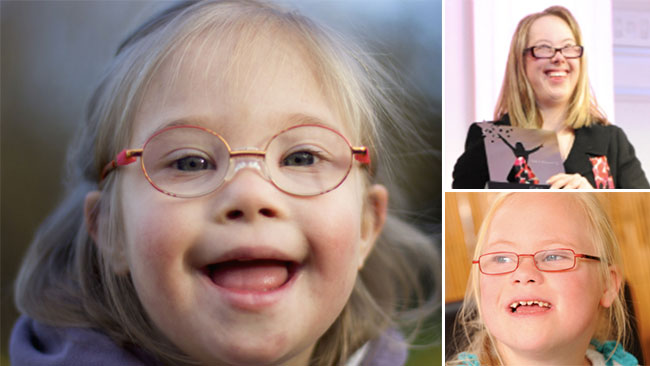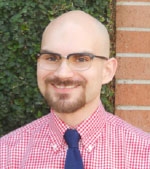Normally, I like to start out my articles with some kind of witty turn of phrase or a backhanded story that somehow segues into my main point. My topic this month, however, is too serious for either of those approaches, so I'm just going to get right into the thick of it: We need to be aware of the needs of children with Down's Syndrome.

I wasn't aware of the special optical needs of Down's patients until several parents happened to come through our dispensary, asking for adjustments and repairs, and during the course of the visit vented their frustrations with finding the right pair of glasses for their children. It's estimated that between approximately 40 to 90 percent of all people with Down's Syndrome (DS) suffer from some sort of refractive or accommodation error, so properly fit eyeglasses are of particular concern. However, the distinct topography of the skulls of individuals with Down's syndrome present a unique challenge. Specifically, most individuals with Down's have a flattened nose bridge (approximately 70 percent) and heads that are much narrower than the average individual's, with a shorter distance between the temples and the nose. It's clear, then, that the majority of most commercially available frames can't be fit quite right for Down's patients: Average temple lengths are far too long, and though our first temptation may be to try and snip wire frames and reattach temple covers in an attempt to modify them, the placement of most nosepads will result in the patient's eyes being situated too near to the top of the lens for practical wear; as the accommodation issues experienced by many DS children result in their needing some sort of bifocal, this becomes an issue all its' own. As patients age, options begin to open up—I've had some success in adjusting teen frames with larger eye-sizes for adults with Down's Syndrome—but, for children, the challenges still remain. What to do then?
Consulting with several parents of DS children around the country (thanks, internet!), I learned that many of their opticians used MiraFlex frames as a go-to choice. The results from the individuals I consulted were mixed: Parents tended to be pleased with the durability of the frames, and the unique styling of the bridge meant that many models sat comfortably on the children's nose. However, the girth of the children's heads vs. the length almost always required aftermarket modifications to the frames' straps in order to get them to stay properly in place. Additionally, many parents of older children were reluctant to put their kids into frames that immediately identified them as being different from their classmates; in fact, my awareness of the plight of visually challenged DS children was first raised by a mother who brought her son into our dispensary in search of what she called "normal looking glasses" for her twelve-year-old, whose previous optician had continued to fit him in MiraFlex glasses long after his classmates had graduated on to frames more aesthetically suited to their age group. Children with DS can be just as aware of their own appearance and be made to feel just as self-conscious as any other child their age. To assume that because they have special needs their own personal appearance doesn't matter to them is disingenuous.
Another solution offered by some opticians was to snip temples and then attach sports straps in order to hold frames in place. This proved to be so poor an idea that the United Kingdom Down's Syndrome Association has a specific recommendation against such an alternative in their guide for parents of visually challenged DS children. Almost across the board, most children found this modification to be uncomfortable (and unsightly) and on the whole made them more reluctant to wear their glasses. The same went for cable temple glasses, which most children have found uncomfortable and intrusive.
What's the solution, then?
At this point, it seems that further awareness raising is the best route. There are several companies that manufacture frames especially for DS children, but despite the number of parents I consulted for this article, there was no consensus on a quality manufacturer or product. By and far, the company with the most recognition, and the one most often utilized by opticians and optometrists, is specs4us. This is the company whose product I have the most hands on experience with myself, as all of the adjustments for DS children I've done were on specs4us glasses. The frames are lightweight, with a lowered bridge designed to sit just above the patient's nostrils, and short temple lengths. The frames are especially easy to adjust, which is where most parents' issues arise—just as they're a simple fix for an optician, the lightweight, pliable material of the glasses makes it especially easy for children to bend and even break.
The other recommended frame line of choice is Tomato Active. I have no personal experience with these frames myself so cannot offer any individual assessment, but they're the other brand that consistently came up in conversation with the parents of DS children. The frames have a slightly better reputation in terms of durability and longevity vs. specs4us, but carry many of the same stigmas that accompany MiraFlex frames: Based on the idea that the wearers will be children, Tomato's frame designs lie somewhere between MiraFlex and contemporary zyl styles, for fashions that may not be pleasing to children past a certain age.
The best solution, then, would seem to be for us to work to not only raise our own awareness but also that of frame manufacturers and designers so that they can begin offering suitable frames for DS children that are comfortable as well as cosmetically appealing.

Preston Fassel was born in Houston, Texas and grew up between St. Charles, Missouri and Broken Arrow, OK.
In 2009, Preston graduated Summa Cum Laude with a degree in Liberal Arts. In 2011, he graduated Cum Laude from Sam Houston State University with a Bachelor's of Science.
Preston currently works as an Optician in the Houston area. His interest in the history of eyewear goes back to his time in high school, when he developed an interest in all things vintage.
In addition to his writing for The 20/20 Opticians Handbook and 20/20 Magazine, Preston has also been featured in Rue Morgue magazine, where he is a recurrent reviewer of horror and science-fiction DVDs. His fiction writing has been featured three times in Swirl magazine, the literary arts journal of Lone Star College and Montgomery County. An essay on the life and death of British horror actress Vanessa Howard is scheduled to appear in the Spring issue of the quarterly horror journal, Screem.
Preston lives in Conroe, Texas with his wife, Kayleigh, and his ego, Ted.












